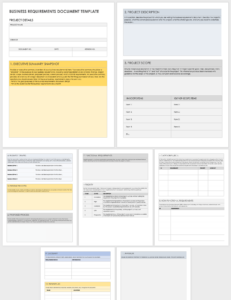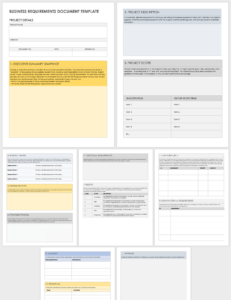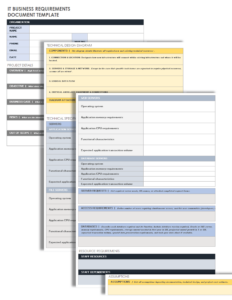A business requirement document (BRD) is a vital document that outlines the specific needs and expectations of a business for a new or updated software system. It serves as a blueprint for the development team to ensure that the final product meets the intended business objectives. Creating a comprehensive BRD is crucial for successful project delivery, and it can be simplified by utilizing a structured business requirement document template.
Understanding the Purpose and Benefits of Business Requirement Document Templates
Business requirement document templates provide a standardized framework for capturing and organizing business requirements. They guide the requirements gathering process, ensuring that all necessary information is collected, analyzed, and documented. By using a template, businesses can streamline the BRD creation process, reducing the risk of missing or incomplete requirements.
The benefits of using business requirement document templates extend beyond efficiency. Templates help ensure consistency and clarity across multiple projects, as they establish a common language for defining and documenting requirements. They promote collaboration and understanding among stakeholders, as all parties involved have a shared reference point for discussing and validating requirements.
Moreover, business requirement document templates provide a foundation for effective communication with the development team. By presenting requirements in a structured and unambiguous manner, templates minimize the potential for misunderstandings and errors. They contribute to a smooth development process and reduce the likelihood of costly rework or delays.
Key Components of a Comprehensive Business Requirement Document Template
A comprehensive business requirement document template typically includes the following key components:
1. Project Overview: This section provides a high-level summary of the project, including its scope, objectives, and key stakeholders.
2. Business Objectives: Clearly define the business goals that the software system is intended to achieve.
3. Functional Requirements: Specify the specific features and functionalities that the system should possess to meet business needs.
4. Non-Functional Requirements: Outline the system’s performance, security, accessibility, and other technical requirements.
5. User Stories and Use Cases: Provide detailed descriptions of how the system will be used by different user groups and for various scenarios.
6. Assumptions and Constraints: Document any assumptions made during the requirements gathering process and any constraints that may impact the development of the system.
7. Glossary and Definitions: Define key terms and concepts used throughout the document to ensure clear understanding.
Conclusion
Business requirement document templates are indispensable tools for ensuring the success of software development projects. They provide a structured and efficient approach to capturing, organizing, and documenting business requirements. By using a comprehensive template, businesses can streamline the BRD creation process, improve communication with the development team, and minimize the risk of errors and misunderstandings. Ultimately, business requirement document templates contribute to the delivery of high-quality software systems that meet the specific needs and expectations of the business.
Remember, a well-crafted business requirement document is not simply a checkbox exercise; it serves as a vital foundation for successful project planning, execution, and delivery. By embracing the use of business requirement document templates, businesses can empower their teams to develop innovative and effective software solutions that drive business value.


